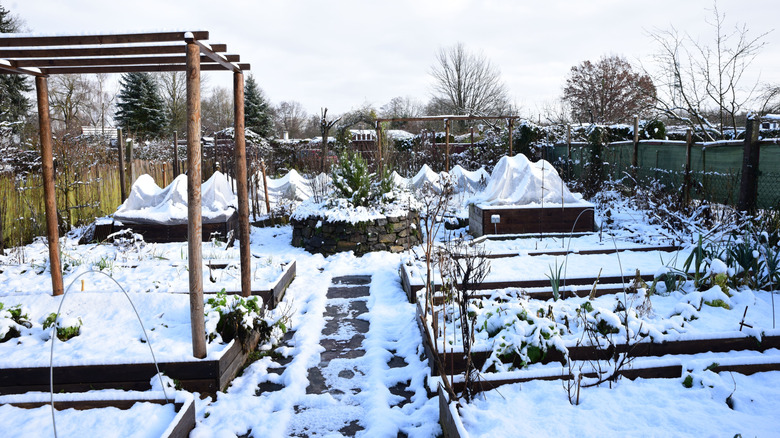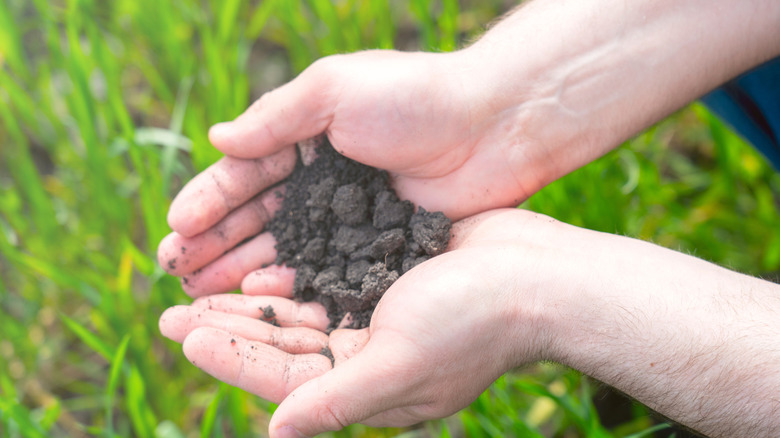How Letting Weeds Grow During The Winter Season May Lead To Healthier Soil
Everyone knows that you should never leave your garden soil bare. The top layer of exposed dirt suffers from nutrient loss, structural degradation, and erosion. Plus, weeds will move in if you leave it bare. But what if we told you that leaving the weeds to grow might be a solution, rather than a problem — especially over the cold months? If you're wondering what to do about winter weeds in your lawn and garden, here's a radical idea: just leave them alone. At minimum, winter weeds will protect your precious, nutrient-rich soil from the elements, functioning much like mulch. What's more, any weeds, especially grasses, hold erosion-prone soil in place, which is helpful during wild weather. Gardeners and farmers alike plant cover crops, like clover, vetch, and plantain, for exactly these purposes. And guess what? Many cover crops species are considered weeds if growing unplanned.
If we tolerate, or even embrace, well-behaved weeds as cover crop plants, it's not too much of a stretch to think that leaving their more unruly, wild counterparts in the garden over winter would be beneficial. Some common weeds, like black medic and clover, absorb nitrogen from the atmosphere, storing it in their roots. All dead weeds nourish the soil and the organisms that inhabit it as they decompose. Some weeds aid in water retention, while others break up compacted soil with their long taproots or snaking rhizomes. Weeds that form thick mats, like chickweed and henbit, are especially effective against erosion. According to a literature and case study review published in Agriculture in 2021, weeds that pop up within cover crops reduce soil loss and improve nitrogen retention.
Use winter weeds to diagnose soil health before spring
The two types of weeds you'll find in the yard during winter are broadleaf and grassy weeds. Since most plants grow slower or go dormant over the winter months, resilient weed species may be easier to spot. Use this time to study them; they can provide helpful diagnostics you can use in the spring, such as understanding the type of soil in your garden.
For example, the presence of thistle and dandelion may mean your soil is compacted. Nutgrass, dock, bindweed, and sheep sorrel love moisture and indicate soil in need of amendments to help it drain better. Sandburs, clover, mullein, ox-eye, and daisies like low-nitrogen soil. If you're planning to a spring garden full of nitrogen-loving plants, you'll need to add nitrogen fertilizer once the ground is workable. Broadly speaking, however, the presence of weeds means you likely have healthy soil.
However, there's one significant downside to leaving garden weeds in situ through the winter. The seeds they drop all over your garden will lie in wait, ready to sprout once the weather warms again and compete with your spring plantings. To combat this, you can chop fresh growth to the ground or hand-pull the weeds in late winter or early spring. You should, of course, always get rid of sneaky weeds that'll wreak havoc on your lawn during winter, such as cheatgrass and horseweed, among others.

